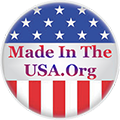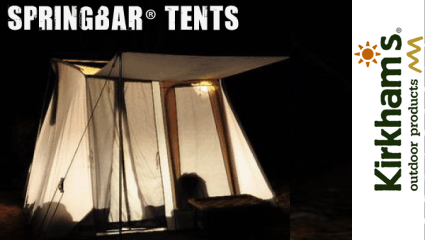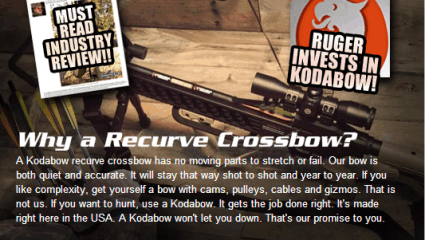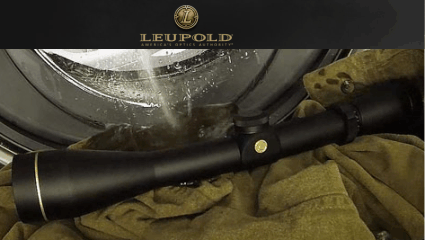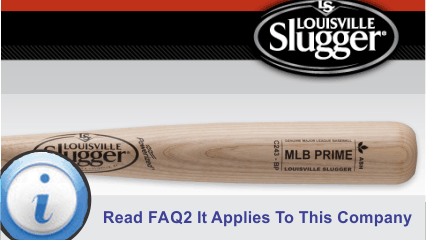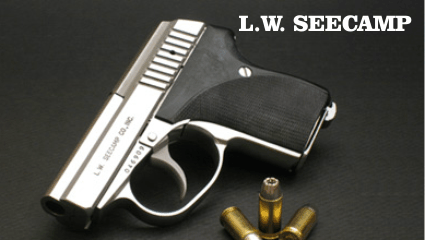Beat your foreign competition by becoming a member!
Join our organization and beat your foreign competition!
The following members sell Made in America Products in the Sports & Outdoors Category
One of the products Kirkhams Outdoor Products sells is Made in America Camping Furniture. A more complete list of their products is provided by Made in America Secrets, to review their list click here.
For more information about Kirkhams Outdoor Products and its American Made products see the following:
We pride ourselves on not only manufacturing the best quality, best-functioning canvas tents, but also in maintaining a huge selection of outdoor and casual footwear, technical clothing, sportswear, travel gear, and back country ski equipment.
This also includes its core categories of sleeping bags, stoves, packs, camping equipment and, of course, tents. We strive to provide the best selection of merchandise available for a long camping trip, a travel adventure, or just a short hike in the woods. In keeping with our roots, we have a complete factory service department, selling different weights of canvas duck, Cordura? nylon, and other specialty fabrics. We also sell zippers, buckles, rope, cord, snaps grommets and other do-it-yourself project or repair items.
With this wide variety of products, an extremely knowledgeable staff, and the unique perspective of being both a retailer and product manufacturer, Kirkham's Outdoor Products continues to provide its customers with the finest outdoor specialty goods available. Our tradition of exceptional service has been our trademark for over 60 years.
For more information about Kirkhams Outdoor Products and its American Made products see the following:
We pride ourselves on not only manufacturing the best quality, best-functioning canvas tents, but also in maintaining a huge selection of outdoor and casual footwear, technical clothing, sportswear, travel gear, and back country ski equipment.
This also includes its core categories of sleeping bags, stoves, packs, camping equipment and, of course, tents. We strive to provide the best selection of merchandise available for a long camping trip, a travel adventure, or just a short hike in the woods. In keeping with our roots, we have a complete factory service department, selling different weights of canvas duck, Cordura? nylon, and other specialty fabrics. We also sell zippers, buckles, rope, cord, snaps grommets and other do-it-yourself project or repair items.
With this wide variety of products, an extremely knowledgeable staff, and the unique perspective of being both a retailer and product manufacturer, Kirkham's Outdoor Products continues to provide its customers with the finest outdoor specialty goods available. Our tradition of exceptional service has been our trademark for over 60 years.
One of the products Kodabow sells is Made in the USA Archery. A more complete list of their products is provided by Made in America Secrets, to review their list click here.
For more information about Kodabow and its Made in America products see the following:
At Kodabow, we build crossbows using state of the art manufacturing processes and materials.
We do not take shortcuts. Everything we do is well done and every feature on our crossbow has a reason driving the development. The objective was to build a finely finished and highly durable sporting arm with solid performance characteristics and high accuracy. You can immediately feel the difference when you pick up a Kodabow crossbow. You will be convinced when you pull the trigger. The difference is technology like the Kodabow Cam Following Trigger System (CFT?).
We make each individual part stronger and with more precision that you might ever expect and well beyond what you may ever need. A crossbow is a sum of its parts and the failure of any part or design element can quickly become a disaster in the field. Since we are hunters, we know the importance of the experience. We also know that you would not be considering Kodabow unless you felt the same way. You have high expectations and so do we.
The world is changing around us. Made in the USA is heard less frequently than it should be. Technology can create new opportunities as well new challenges in a disorienting manner. As a new hunter or as a long time hunter, it is likely that you currently or will eventually personally define yourself to some degree by your passion for this sport. Time in the field often provides the moments to reflect and sort through life's priorities and future plans. It is unusual to be a hunter and not feel strongly about ethics, fair chase, political positions and even the overall direction of our country as it relates to your sport. In this changing world, you may find that the outdoors and your hunting experiences are cornerstones that serve you well through youth to older age. It is timeless to revisit the woods where you hunted years or decades earlier. If you choose to make this journey with good equipment, it is a wise decision... and Kodabow will be there for you. Our crossbows are simple and straightforward. They are highly capable products and if you are a hunter, we expect that Kodabow crossbows will serve you well.
The people behind this company are exceptionally skilled. In our collective experience base, we have built components that meet unique service requirements for the space program, tactical military weapons and commercial shooting sports products. Some of us have hunted nearly 50 years with everything from primitive hunting tools to some of the most advanced shooting systems. These perspectives help us appreciate the art and magic of the hunting experience and drive us to make a great crossbow without compromise.
For more information about Kodabow and its Made in America products see the following:
At Kodabow, we build crossbows using state of the art manufacturing processes and materials.
We do not take shortcuts. Everything we do is well done and every feature on our crossbow has a reason driving the development. The objective was to build a finely finished and highly durable sporting arm with solid performance characteristics and high accuracy. You can immediately feel the difference when you pick up a Kodabow crossbow. You will be convinced when you pull the trigger. The difference is technology like the Kodabow Cam Following Trigger System (CFT?).
We make each individual part stronger and with more precision that you might ever expect and well beyond what you may ever need. A crossbow is a sum of its parts and the failure of any part or design element can quickly become a disaster in the field. Since we are hunters, we know the importance of the experience. We also know that you would not be considering Kodabow unless you felt the same way. You have high expectations and so do we.
The world is changing around us. Made in the USA is heard less frequently than it should be. Technology can create new opportunities as well new challenges in a disorienting manner. As a new hunter or as a long time hunter, it is likely that you currently or will eventually personally define yourself to some degree by your passion for this sport. Time in the field often provides the moments to reflect and sort through life's priorities and future plans. It is unusual to be a hunter and not feel strongly about ethics, fair chase, political positions and even the overall direction of our country as it relates to your sport. In this changing world, you may find that the outdoors and your hunting experiences are cornerstones that serve you well through youth to older age. It is timeless to revisit the woods where you hunted years or decades earlier. If you choose to make this journey with good equipment, it is a wise decision... and Kodabow will be there for you. Our crossbows are simple and straightforward. They are highly capable products and if you are a hunter, we expect that Kodabow crossbows will serve you well.
The people behind this company are exceptionally skilled. In our collective experience base, we have built components that meet unique service requirements for the space program, tactical military weapons and commercial shooting sports products. Some of us have hunted nearly 50 years with everything from primitive hunting tools to some of the most advanced shooting systems. These perspectives help us appreciate the art and magic of the hunting experience and drive us to make a great crossbow without compromise.
One of the products Leupold sells is Made in America Binoculars. A more complete list of their products is provided by Made in America Secrets, to review their list click here.
For more information about Leupold and its American Made products see the following:
Leupold & Stevens, Inc., is an American, family-owned, fifth-generation company that has been designing, machining, and assembling precision optical instruments and other products for 100 years. Founded in 1907, Leupold's? success has been built on our commitment to our customers' absolute satisfaction, and our commitment to building the best optics for the shooting sports, general and wildlife observation, and the military and law enforcement communities.
Past
It's a decidedly American story: one century ago in 1907, a young German immigrant named Fred Leupold set up a one man shop at 5th and Oak Streets in Portland, Oregon, repairing optics for surveying equipment. Leupold & Stevens is still family owned, though our focus has turned from surveying to helping people all across the globe survey their environments with the innovative, high-performance sports optics and accessories.
A lot happened in between. Fred Leupold was joined by his brother-in-law, Adam Voelpel. Later, an ingenious and prolific inventor and consulting engineer named John Cyprian Stevens became a partner in the business. The small company survived the First World War and the Great Depression. But it was the Second World War that would change the company forever. Working with the U.S. Army on a riflescope and the Navy on optics for use aboard ships, the engineers at Leupold learned the secrets of waterproofing and durable construction that would completely change the world of sports optics.
Present
Today, Leupold optics are renowned for their unchallenged ruggedness, absolute waterproof integrity, and their vastly superior optical quality. A century of observation and optical experience has gone into every binocular and scope we produce, and we think the results are well worth the extra effort required to achieve this level of quality.
In true American style, the philosophical foundation laid in our early years served as a template for the company as we've grown and changed over the decades. In fact, the firm's founder established the clarity of purpose that we see at Leupold & Stevens today:
?We solemnly promise never to let down on quality, the customer is entitled to a square deal.?
- Markus Friedrich ?Fred? Leupold
For more information about Leupold and its American Made products see the following:
Leupold & Stevens, Inc., is an American, family-owned, fifth-generation company that has been designing, machining, and assembling precision optical instruments and other products for 100 years. Founded in 1907, Leupold's? success has been built on our commitment to our customers' absolute satisfaction, and our commitment to building the best optics for the shooting sports, general and wildlife observation, and the military and law enforcement communities.
Past
It's a decidedly American story: one century ago in 1907, a young German immigrant named Fred Leupold set up a one man shop at 5th and Oak Streets in Portland, Oregon, repairing optics for surveying equipment. Leupold & Stevens is still family owned, though our focus has turned from surveying to helping people all across the globe survey their environments with the innovative, high-performance sports optics and accessories.
A lot happened in between. Fred Leupold was joined by his brother-in-law, Adam Voelpel. Later, an ingenious and prolific inventor and consulting engineer named John Cyprian Stevens became a partner in the business. The small company survived the First World War and the Great Depression. But it was the Second World War that would change the company forever. Working with the U.S. Army on a riflescope and the Navy on optics for use aboard ships, the engineers at Leupold learned the secrets of waterproofing and durable construction that would completely change the world of sports optics.
Present
Today, Leupold optics are renowned for their unchallenged ruggedness, absolute waterproof integrity, and their vastly superior optical quality. A century of observation and optical experience has gone into every binocular and scope we produce, and we think the results are well worth the extra effort required to achieve this level of quality.
In true American style, the philosophical foundation laid in our early years served as a template for the company as we've grown and changed over the decades. In fact, the firm's founder established the clarity of purpose that we see at Leupold & Stevens today:
?We solemnly promise never to let down on quality, the customer is entitled to a square deal.?
- Markus Friedrich ?Fred? Leupold
One of the products Louisville Slugger sells is American Made Baseball Bats. A more complete list of their products is provided by Made in America Secrets, to review their list click here.
For more information about Louisville Slugger and its Made in the USA products see the following:
In many ways, the rich, 120-year history of the Louisville Slugger baseball bat began in the talented hands of 17-year-old John A. Bud Hillerich.
Bud's father, J. F. Hillerich, owned a growing woodworking shop in Louisville, Kentucky, in the 1880s when Bud began working for him.
Legend has it that Bud, who played baseball himself, slipped away from work one afternoon in 1884 to watch Louisville's major league team, the Louisville Eclipse. The team's star, Pete Browning, mired in a hitting slump, broke his bat.
Bud invited Browning over to his father's shop to make him a new one. With Browning at his side giving advice, Bud hand-crafted a new bat from a long slab of wood. Browning got three hits with it the next day.
From butter churns to baseball history
Browning told his teammates, which began a surge of professional ball players to the Hillerich shop. Yet J. F. Hillerich had little interest in making bats, he saw the company future in stair railings, porch columns and swinging butter churns. For a brief time in the 1880s, he even turned away ball players.
Bud persisted, he saw the future in bats. His father, pleased with his son's enthusiasm, relented. The rest is baseball history.
In 1894, with Bud Hillerich taking over from his father, the name Louisville Slugger was registered with the U.S. Patent Office. In the early 1900s, the growing company pioneered a sports marketing concept by paying Hall of Fame hitter Honus Wagner to use his name on a bat-a practice continued with Michael Jordan, Tiger Woods and so many other professional athletes in virtually all sports today. By 1923, Louisville Slugger was selling more bats than any other bat maker in the country. Baseball was the nation's most popular sport, and legends like Babe Ruth, Ty Cobb and Lou Gehrig all swung Louisville Sluggers.
120 years and still leading the game
Some 120 years have passed since Bud Hillerich crafted that very first bat for Pete Browning. During that time, Louisville Slugger has sold more than 100,000,000 bats, making it without question the most popular bat brand in baseball history. Louisville Slugger continues to dominate the game in both wood and aluminum bat categories. 60% of all Major League players currently use Louisville Slugger. And in the past decade, seven national college baseball champions hammered their way to the top with Louisville Slugger TPX bats.
In recent years, Louisville Slugger has gone far beyond bats, providing performance technology in the form of fielding and batting gloves, helmets, catchers' gear, equipment bags, training aids and accessories. In addition to its on-field performance products, Louisville Slugger offers personalized, miniature, commemorative and collectible bats.
So what would baseball be like if young Bud Hillerich had followed his father's urging and devoted his efforts to making swinging butter churns? We don't even want to think about it.
For more information about Louisville Slugger and its Made in the USA products see the following:
In many ways, the rich, 120-year history of the Louisville Slugger baseball bat began in the talented hands of 17-year-old John A. Bud Hillerich.
Bud's father, J. F. Hillerich, owned a growing woodworking shop in Louisville, Kentucky, in the 1880s when Bud began working for him.
Legend has it that Bud, who played baseball himself, slipped away from work one afternoon in 1884 to watch Louisville's major league team, the Louisville Eclipse. The team's star, Pete Browning, mired in a hitting slump, broke his bat.
Bud invited Browning over to his father's shop to make him a new one. With Browning at his side giving advice, Bud hand-crafted a new bat from a long slab of wood. Browning got three hits with it the next day.
From butter churns to baseball history
Browning told his teammates, which began a surge of professional ball players to the Hillerich shop. Yet J. F. Hillerich had little interest in making bats, he saw the company future in stair railings, porch columns and swinging butter churns. For a brief time in the 1880s, he even turned away ball players.
Bud persisted, he saw the future in bats. His father, pleased with his son's enthusiasm, relented. The rest is baseball history.
In 1894, with Bud Hillerich taking over from his father, the name Louisville Slugger was registered with the U.S. Patent Office. In the early 1900s, the growing company pioneered a sports marketing concept by paying Hall of Fame hitter Honus Wagner to use his name on a bat-a practice continued with Michael Jordan, Tiger Woods and so many other professional athletes in virtually all sports today. By 1923, Louisville Slugger was selling more bats than any other bat maker in the country. Baseball was the nation's most popular sport, and legends like Babe Ruth, Ty Cobb and Lou Gehrig all swung Louisville Sluggers.
120 years and still leading the game
Some 120 years have passed since Bud Hillerich crafted that very first bat for Pete Browning. During that time, Louisville Slugger has sold more than 100,000,000 bats, making it without question the most popular bat brand in baseball history. Louisville Slugger continues to dominate the game in both wood and aluminum bat categories. 60% of all Major League players currently use Louisville Slugger. And in the past decade, seven national college baseball champions hammered their way to the top with Louisville Slugger TPX bats.
In recent years, Louisville Slugger has gone far beyond bats, providing performance technology in the form of fielding and batting gloves, helmets, catchers' gear, equipment bags, training aids and accessories. In addition to its on-field performance products, Louisville Slugger offers personalized, miniature, commemorative and collectible bats.
So what would baseball be like if young Bud Hillerich had followed his father's urging and devoted his efforts to making swinging butter churns? We don't even want to think about it.
One of the products LW Seecamp sells is American Made Firearms. A more complete list of their products is provided by Made in America Secrets, to review their list click here.
For more information about LW Seecamp and its Made in America products see the following:
Ludwig (Louis) Wilhelm Seecamp (1901-1989), after whom the company was named, was trained as a master gunsmith in the technical academy system of pre World War II Germany. Having survived the Eastern Front in an elite Gebirgsjaeger (Mountain Troops) unit, he brought his family to the United States in 1959 by way of Canada. From 1959 until his retirement in 1971, he was the gun designer for O.F. Mossberg.
L.W. Seecamp Co, Inc. was founded in 1973 as a family business specializing in Ludwig's patented (#3722358) double action conversion of the venerable 1911 semi-auto pistol (Colt .45). This conversion, done during a period when the single-action versus double-action controversy was at its peak, resulted in the first commercially available DA .45 autoloaders anywhere in the world. Nearly 2000 such DA conversions were done from the early 70s to the early 80s. Ludwig had become a firm believer in the value of DA after a Walther P-38 saved his life in WWII. That incident, which left him with a cheek-long scar and some missing teeth from a bullet wound, also convinced him point shooting rather than sight use is the reality in close range combat. Having been a fan of the 1911 but being also an advocate of DA carry, commercial conversions were a natural outgrowth of the Colt 45 that Ludwig had converted to DA for his own personal protection.
In 1979 Seecamp Co. introduced as part of its gunsmithing package the telescoping recoil system that has become the predominant spring system used by modern short-slide short-recoil autoloaders. This system is the subject matter of patent #4201113 issued to Ludwig's son and Seecamp Company co-founder Lueder (Larry) Seecamp. In the September/October 1979 issue of American Handgunner in an article entitled The Rolls Royce of Bobcat .45's, Mason Williams said, This is such a major development in the field of (miniaturization of) automatic pistols that it could easily be considered the most significant development in a hundred years in the field. While the patent was still active, the system was used by Glock, Colt, Kahr, Cylinder and Slide, Para-Ordnance and Lasermax (for use in the laser units for the mini-Glocks). After the expiration of the patent in 1998, other manufacturers such as Kimber, Taurus, IM Metal, Springfield Armory, etc., quickly adopted the system for use in their short slide autos.
By the late 1970s a number of DA .45s, including the excellent Browning BDA (later SIG), had appeared on the market. Gunsmithing was thus abandoned for manufacture. Introduced in 1981 was the LWS .25 to fill a niche that had fallen into neglect. After the Gun Control Act of 1968, small quality pistols were hard to find. Moreover, the brilliant concept of double action only had lain dormant for over a quarter century and was due for a revival. All DA only pistols, more properly referred to as trigger cocking only pistols, are the grandkids of either the Czech CZ36/CZ45 design if they have hammers or the French LeFrancais design if they are striker fired. The LWS is a descendant of the Czech line. The Glocks and the Keltecs are descendants of the French line. Credit should be given where credit is due.
The LWS .25 helped revive DA only and small pistol manufacture. It was the world's first stainless steel DA only pistol, and it was also the first DA only hammer fired semi-auto made in the USA. This design was covered by U.S. patents 4,428,138 and D269,896 issued to Ludwig (Louis) Seecamp. The LWS design has remained essentially unchanged since 1981 except for caliber - the numbers after LWS designating the caliber upgrade.
Prior to the introduction of the LWS .25, firearms manuals did not address the issue of self-defense. It was pretended in the manufacturers' instruction manuals, no doubt on the advice of high priced lawyers, that every pistol was a target pistol. Extensive sections of our first manual were reprinted in gun magazines because a manufacturer officially acknowledging self-protection as a legitimate reason for owning a firearm was a completely novel concept at the time. It was almost as shocking as bringing out a pistol without sights.
Around 1985 the LWS .25 was discontinued and the LWS .32 was introduced. The larger caliber pistol remained exactly the same size, which at the time was considered an amazing feat. The caliber .32 had at the time of the introduction of the LWS .32 been relegated to the dustbin of firearms history. Today .32 caliber is thriving in very great part because of the LWS .32 and its clones - and the demonstration that such a market existed.
2003 saw the introduction of the LWS .380 to commerce, which gun is identical in size and weight to the LWS .25 or the LWS .32. As to the benefits of the larger caliber: There are stopping power arguments about bullet speed but no one argues about hole size. A bullet that is less than .380 size may or may not expand to .380 size. A bullet that is already a .380 doesn't shrink. While larger calibers are generally more effective, smaller calibers are easier to manage for recoil recovery time - the time it takes to control follow-up shots. It is therefore a shooter's choice as to whether the LWS .32 or the LWS .380 is the more effective weapon for them. (A 34 ounce bat works well for some hitters, but big bats only offer an advantage if they can be easily controlled. The rule of thumb is, the biggest bat you can easily control is the best bat for you.)
For more information about LW Seecamp and its Made in America products see the following:
Ludwig (Louis) Wilhelm Seecamp (1901-1989), after whom the company was named, was trained as a master gunsmith in the technical academy system of pre World War II Germany. Having survived the Eastern Front in an elite Gebirgsjaeger (Mountain Troops) unit, he brought his family to the United States in 1959 by way of Canada. From 1959 until his retirement in 1971, he was the gun designer for O.F. Mossberg.
L.W. Seecamp Co, Inc. was founded in 1973 as a family business specializing in Ludwig's patented (#3722358) double action conversion of the venerable 1911 semi-auto pistol (Colt .45). This conversion, done during a period when the single-action versus double-action controversy was at its peak, resulted in the first commercially available DA .45 autoloaders anywhere in the world. Nearly 2000 such DA conversions were done from the early 70s to the early 80s. Ludwig had become a firm believer in the value of DA after a Walther P-38 saved his life in WWII. That incident, which left him with a cheek-long scar and some missing teeth from a bullet wound, also convinced him point shooting rather than sight use is the reality in close range combat. Having been a fan of the 1911 but being also an advocate of DA carry, commercial conversions were a natural outgrowth of the Colt 45 that Ludwig had converted to DA for his own personal protection.
In 1979 Seecamp Co. introduced as part of its gunsmithing package the telescoping recoil system that has become the predominant spring system used by modern short-slide short-recoil autoloaders. This system is the subject matter of patent #4201113 issued to Ludwig's son and Seecamp Company co-founder Lueder (Larry) Seecamp. In the September/October 1979 issue of American Handgunner in an article entitled The Rolls Royce of Bobcat .45's, Mason Williams said, This is such a major development in the field of (miniaturization of) automatic pistols that it could easily be considered the most significant development in a hundred years in the field. While the patent was still active, the system was used by Glock, Colt, Kahr, Cylinder and Slide, Para-Ordnance and Lasermax (for use in the laser units for the mini-Glocks). After the expiration of the patent in 1998, other manufacturers such as Kimber, Taurus, IM Metal, Springfield Armory, etc., quickly adopted the system for use in their short slide autos.
By the late 1970s a number of DA .45s, including the excellent Browning BDA (later SIG), had appeared on the market. Gunsmithing was thus abandoned for manufacture. Introduced in 1981 was the LWS .25 to fill a niche that had fallen into neglect. After the Gun Control Act of 1968, small quality pistols were hard to find. Moreover, the brilliant concept of double action only had lain dormant for over a quarter century and was due for a revival. All DA only pistols, more properly referred to as trigger cocking only pistols, are the grandkids of either the Czech CZ36/CZ45 design if they have hammers or the French LeFrancais design if they are striker fired. The LWS is a descendant of the Czech line. The Glocks and the Keltecs are descendants of the French line. Credit should be given where credit is due.
The LWS .25 helped revive DA only and small pistol manufacture. It was the world's first stainless steel DA only pistol, and it was also the first DA only hammer fired semi-auto made in the USA. This design was covered by U.S. patents 4,428,138 and D269,896 issued to Ludwig (Louis) Seecamp. The LWS design has remained essentially unchanged since 1981 except for caliber - the numbers after LWS designating the caliber upgrade.
Prior to the introduction of the LWS .25, firearms manuals did not address the issue of self-defense. It was pretended in the manufacturers' instruction manuals, no doubt on the advice of high priced lawyers, that every pistol was a target pistol. Extensive sections of our first manual were reprinted in gun magazines because a manufacturer officially acknowledging self-protection as a legitimate reason for owning a firearm was a completely novel concept at the time. It was almost as shocking as bringing out a pistol without sights.
Around 1985 the LWS .25 was discontinued and the LWS .32 was introduced. The larger caliber pistol remained exactly the same size, which at the time was considered an amazing feat. The caliber .32 had at the time of the introduction of the LWS .32 been relegated to the dustbin of firearms history. Today .32 caliber is thriving in very great part because of the LWS .32 and its clones - and the demonstration that such a market existed.
2003 saw the introduction of the LWS .380 to commerce, which gun is identical in size and weight to the LWS .25 or the LWS .32. As to the benefits of the larger caliber: There are stopping power arguments about bullet speed but no one argues about hole size. A bullet that is less than .380 size may or may not expand to .380 size. A bullet that is already a .380 doesn't shrink. While larger calibers are generally more effective, smaller calibers are easier to manage for recoil recovery time - the time it takes to control follow-up shots. It is therefore a shooter's choice as to whether the LWS .32 or the LWS .380 is the more effective weapon for them. (A 34 ounce bat works well for some hitters, but big bats only offer an advantage if they can be easily controlled. The rule of thumb is, the biggest bat you can easily control is the best bat for you.)
